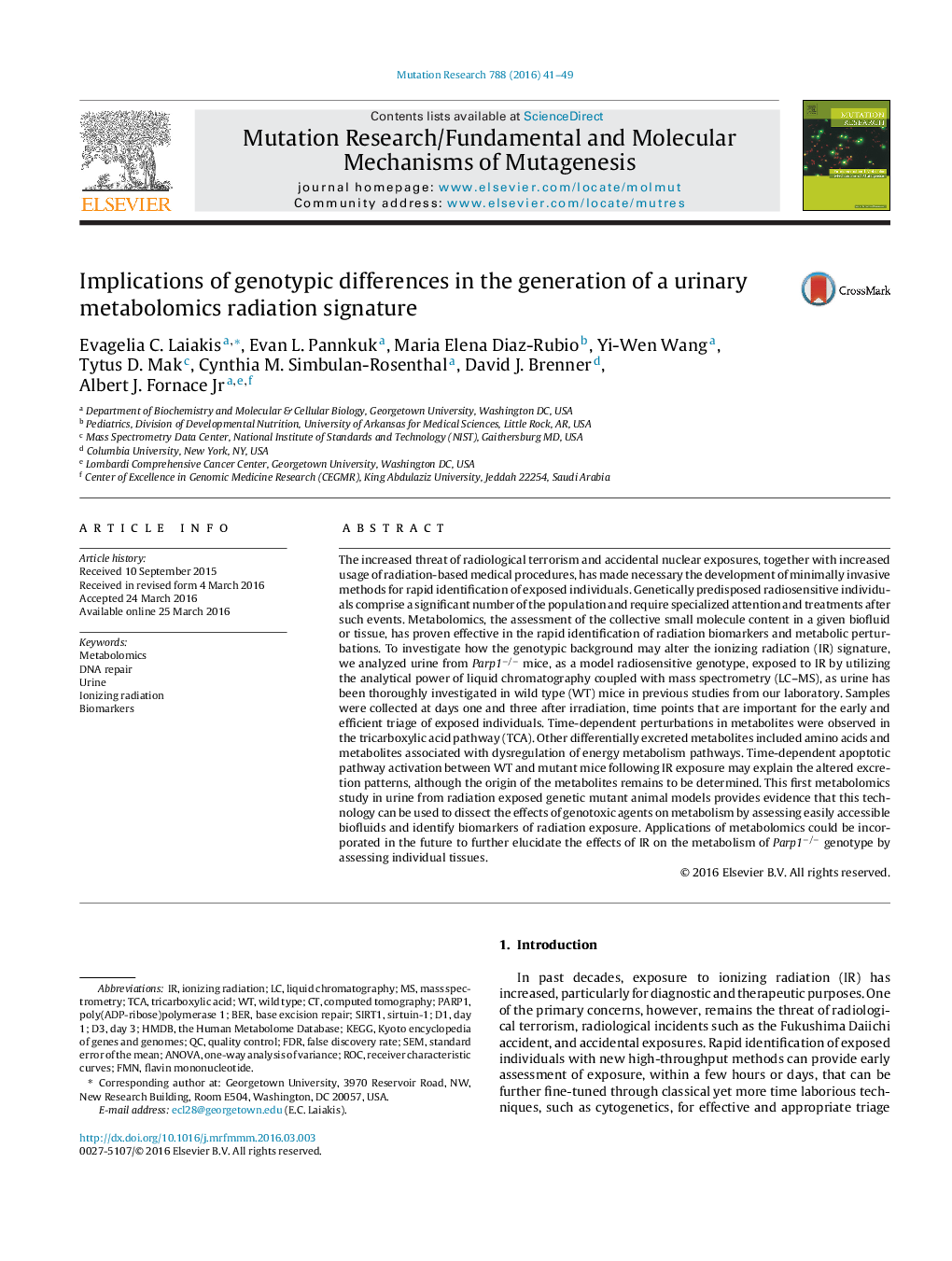| کد مقاله | کد نشریه | سال انتشار | مقاله انگلیسی | نسخه تمام متن |
|---|---|---|---|---|
| 2146142 | 1548312 | 2016 | 9 صفحه PDF | دانلود رایگان |
• Metabolomics can rapidly assess the collective small molecule content in biofluids.
• Previous studies focused on urine of wild type mice and now extending to radiosensitive mice.
• The Parp1−/− mice were utilized as a model radiosensitive mouse line.
• Time-dependent perturbations are evident in different metabolic pathways.
• Metabolomics can be used to dissect the effects of genotoxic agents on metabolism.
The increased threat of radiological terrorism and accidental nuclear exposures, together with increased usage of radiation-based medical procedures, has made necessary the development of minimally invasive methods for rapid identification of exposed individuals. Genetically predisposed radiosensitive individuals comprise a significant number of the population and require specialized attention and treatments after such events. Metabolomics, the assessment of the collective small molecule content in a given biofluid or tissue, has proven effective in the rapid identification of radiation biomarkers and metabolic perturbations. To investigate how the genotypic background may alter the ionizing radiation (IR) signature, we analyzed urine from Parp1−/− mice, as a model radiosensitive genotype, exposed to IR by utilizing the analytical power of liquid chromatography coupled with mass spectrometry (LC–MS), as urine has been thoroughly investigated in wild type (WT) mice in previous studies from our laboratory. Samples were collected at days one and three after irradiation, time points that are important for the early and efficient triage of exposed individuals. Time-dependent perturbations in metabolites were observed in the tricarboxylic acid pathway (TCA). Other differentially excreted metabolites included amino acids and metabolites associated with dysregulation of energy metabolism pathways. Time-dependent apoptotic pathway activation between WT and mutant mice following IR exposure may explain the altered excretion patterns, although the origin of the metabolites remains to be determined. This first metabolomics study in urine from radiation exposed genetic mutant animal models provides evidence that this technology can be used to dissect the effects of genotoxic agents on metabolism by assessing easily accessible biofluids and identify biomarkers of radiation exposure. Applications of metabolomics could be incorporated in the future to further elucidate the effects of IR on the metabolism of Parp1−/− genotype by assessing individual tissues.
Journal: Mutation Research/Fundamental and Molecular Mechanisms of Mutagenesis - Volume 788, June 2016, Pages 41–49
